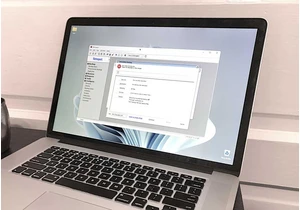Mozilla is bringing all kinds of new features and improvements with the latest Firefox 141 update, including the ability to organize tag groups with the help of AI and use the address bar as a unit converter.
In addition, the developers have addressed several security vulnerabilities per usual, in both Firefox and Firefox ESR versions.
Mozilla plans to release the next versions—including Firefox 142 and Firefox ESR 140.2, ESR 128.14, and ESR 115.27—on August 19th, 2025. Firefox ESR 128 will receive its last update in August, as will Firefox ESR 115 (subject to Mozilla’s pending decision).
What’s new in Firefox 141?
You can now partially automate the organization of multiple tabs in tab groups with AI support. A local AI model (which doesn’t send any information to the cloud and thus preserves privacy) can automatically group similar tabs and suggest suitable names for the tab group. Mozilla will be gradually rolling out this feature over the next few weeks.
Furthermore, if you use the vertical tabs layout introduced in Firefox 136, you can now create more space for even more tabs by minimizing the toolbar at the bottom of the sidebar.
Since version 136, Firefox has been initially displaying placeholders when a website embeds content from Instagram or TikTok, and the content is only loaded after clicking on it. With Firefox 138, similar support was added for X/Twitter, and with Firefox 141, Disqus is also supported.
You can now also use the address bar to convert units without referring to Google or another search engine. The built-in unit calculator recognizes metric and imperial units for length, mass, temperature, force, and angles.
Firefox 141 can also convert time to different time zones. For example, “10:00 CEST in EDT” presents the time as it would be in US East Coast for when it’s 10:00 (summer time) in Germany. Then, “now in JST” would give the current time in Japan.
Other conversion examples: “100 km in mi” converts to English miles, “28 C in F” converts degrees Celsius to Fahrenheit, and if you click on the result, it ends up in your clipboard. Incidentally, the address bar has been able to do math since Firefox 137.
Security updates in Firefox 141
Mozilla’s 2025-56 Security Advisory shows more than 18 fixed vulnerabilities in Firefox 141.
Mozilla categorizes two of the externally reported vulnerabilities (CVE-2025-8027 and CVE-2025-8028) as high risk. For example, the JavaScript JIT compiler IonMonkey only writes 32 bits of a 64-bit return value to the stack, but the base JIT reads all 64 bits, which could invite abuse.
Four entries in the security report concern internally discovered vulnerabilities, each summarized under a CVE number. They are also considered high risk. The other vulnerabilities that Mozilla’s developers have fixed in Firefox 141 are categorized as medium or low risk.
Updates for Firefox ESR
Mozilla is currently maintaining three transitional Firefox ESR generations: versions 140, 128, and 115.
Firefox ESR 140.1.0 is the most technically up-to-date version and also the one with the longest life expectancy (until September 2026). The developers have fixed at least 14 security vulnerabilities in this version, which have also been fixed in Firefox 141.
Firefox ESR 128.13.0 is the latest version of the previous generation, which is nearing its end. The update fixes at least nine vulnerabilities.
The update to Firefox ESR 115.26 addresses four security flaws, but this one is only available on Windows 7/8.1 and macOS 10.12 to 10.14 computers. In August, Mozilla will decide whether to continue or end maintenance for Firefox ESR 115.
Further reading: Firefox is getting WebGPU, but only on Windows
Войдите, чтобы добавить комментарий
Другие сообщения в этой группе

One of the handier features on new cars is the ability to remotely un

The niche, privacy-focused Brave browser will now block Microsoft’s c

For me, the biggest difference between a “gaming” mouse or keyboard a

A brand-new Kindle Paperwhite will run you at least $160—more if you


If you’re looking to speed up your PC, you should consider using two

